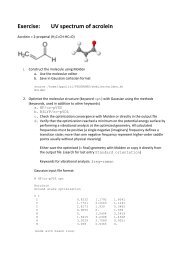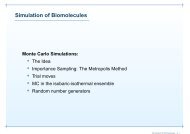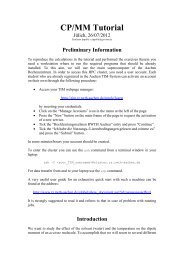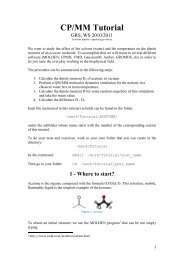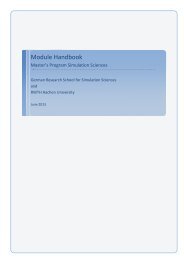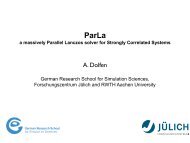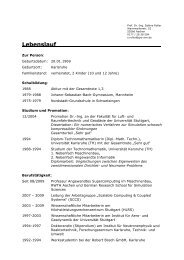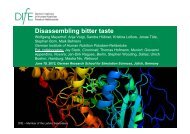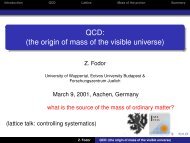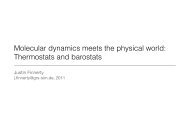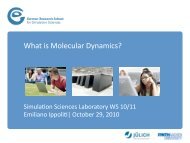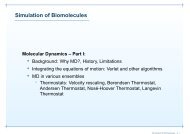Slides
Slides
Slides
You also want an ePaper? Increase the reach of your titles
YUMPU automatically turns print PDFs into web optimized ePapers that Google loves.
QM/MM: Electrostatic interaction<br />
• Plane waves: Simple numerical evalua4on of the coupling term is <br />
prohibi4ve as it would involve a large number of opera4ons: <br />
• Electronic charge density n(r) is defined on a FFT grid in both real <br />
and reciprocal space: <br />
Number of grid points (QM) × Number of MM atoms <br />
E es<br />
QM −MM<br />
n(r)<br />
= ∑ q I ∫<br />
i∈MM r − R I<br />
• Electron spill out or charge leakage due to the lack of orthogonality <br />
and thus Pauli repulsion for the interac4on of the electrons in the QM <br />
part with the nearby MM atoms. <br />
• Par4cularly severe for plane-‐wave basis sets <br />
• The nega4ve electronic density can easily spread out into the <br />
vacuum region, where the posi4ve par4al charges of the MM <br />
atoms are located, instead of being kept close to the QM nuclei as <br />
is the case if small Gaussian basis sets without diffuse func4ons <br />
are used. <br />
• Various coupling schemes devised to cope with this problem <br />
dr



